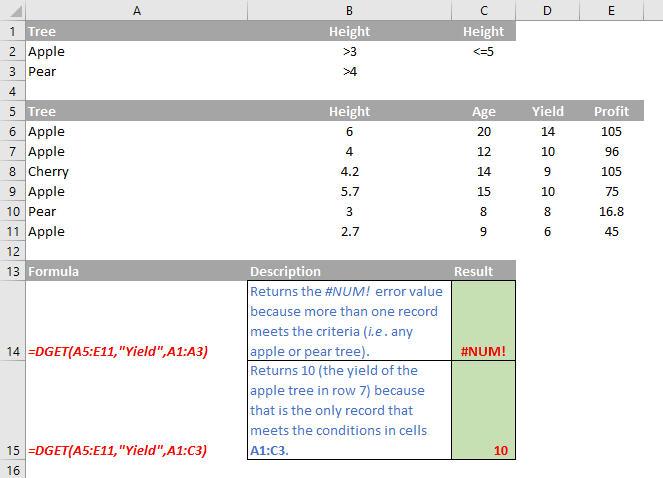A to Z of Excel Functions: The DGET Function
6 August 2018
Welcome back to our regular A to Z of Excel Functions blog. Today we look at the DGET function.
The DGET function
This function extracts a single value from a column of a list or database that matches conditions that you specify.

The DGET function employs the following syntax to operate:
DGET(database, field, criteria)
The DGET function has the following arguments:
- database: this is required and represents the range of cells that makes up the list or database. A database is a list of related data in which rows of related information are records, and columns of data are fields. The first row of the list contains labels for each column
- field: this is also required. This indicates which column is used in the function. Enter the column label enclosed between double quotation marks, such as "Age" or "Yield," or a number (without quotation marks) that represents the position of the column within the list: 1 for the first column, 2 for the second column, and so on
- criteria: this is required too. This is the range of cells that contains the conditions that you specify. You can use any range for the criteria argument, as long as it includes at least one column label and at least one cell below the column label in which you specify a condition for the column.
It should be further noted that:
- if no record matches the criteria, DGET returns the #VALUE! error value
- if more than one record matches the criteria, DGET returns the #NUM! error value
- you can use any range for the criteria argument, as long as it includes at least one column label and at least one cell below the column label for specifying the condition. For example, if the range G1:G2 contains the column label Income in G1 and the amount $10,000 in G2, you could define the range as MatchIncome and use that name as the criteria argument in the database functions
- although the criteria range can be located anywhere on the worksheet, do not place the criteria range below the list. If you add more information to the list, the new information is added to the first row below the list. If the row below the list is not blank, Excel cannot add the new information
- make sure that the criteria range does not overlap the list
- to perform an operation on an entire column in a database, enter a blank line below the column labels in the criteria range.
Please see my example below:

We’ll continue our A to Z of Excel Functions soon. Keep checking back – there’s a new blog post every business day.
A full page of the function articles can be found here.

